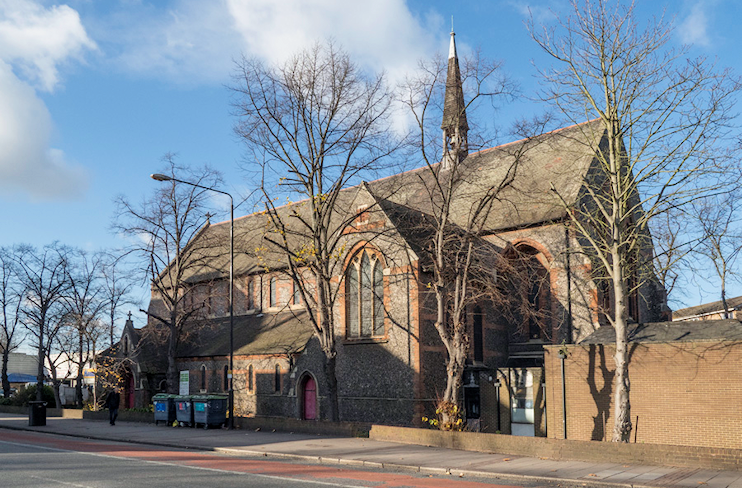Woodgrange Park
Woodgrange Park, Newham
An attractive Victorian estate with recent additions, located on the border of Forest Gate and Manor Park

Woodgrange, which means ‘a farm in a forest clearing’, was first recorded in 1198, when it was in the possession of Stratford Abbey.
The manor remained in agricultural use until it was sold to Thomas Corbett in the 1850s. Corbett and his son Cameron sold part of the farm for use as a cemetery and developed the remainder over a 15-year period from 1877, with building progressing from east to west. This was Cameron Corbett’s first such project and he went on to become one of London’s greatest suburban housebuilders. The Woodgrange estate was a well-planned development of 700 homes with architectural detailing that echoed Victorian railway stations.
Shown in the photo above,* the Anglican church of All Saints was built in 1886 at the corner of Hampton Road and Romford Road. The architect was the prolific church builder Arthur Blomfield.
The first burials took place at Woodgrange Park cemetery in 1889 and Woodgrange Park station opened on a spur of the Tottenham and Forest Gate Railway in 1894.
The Woodgrange estate was designated a conservation area in 1976, but not before many original features had been lost. Woodgrange Park Village is a small housing association estate built in the 1990s to the east of the station.
Controversy arose in 2000 when developers Bellway Urban Renewal exhumed more than 12,000 bodies from a disused part of Woodgrange Park Cemetery in preparation for building 120 new apartments. The bodies, many of them Blitz victims, were reinterred elsewhere in the cemetery but local residents expressed disapproval of the way in which the remains were handled.
Woodgrange Park’s name is nowadays applied only to the immediate vicinity of the station. Besides English, the locality’s languages include Bengali, Punjabi, Urdu and Gujarati.
